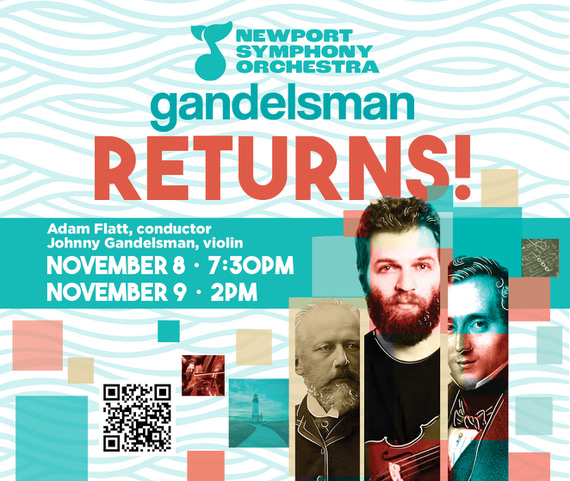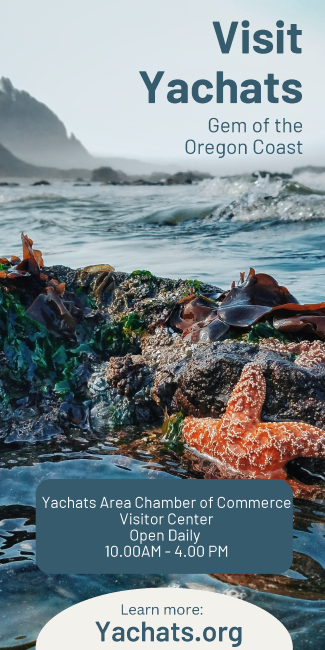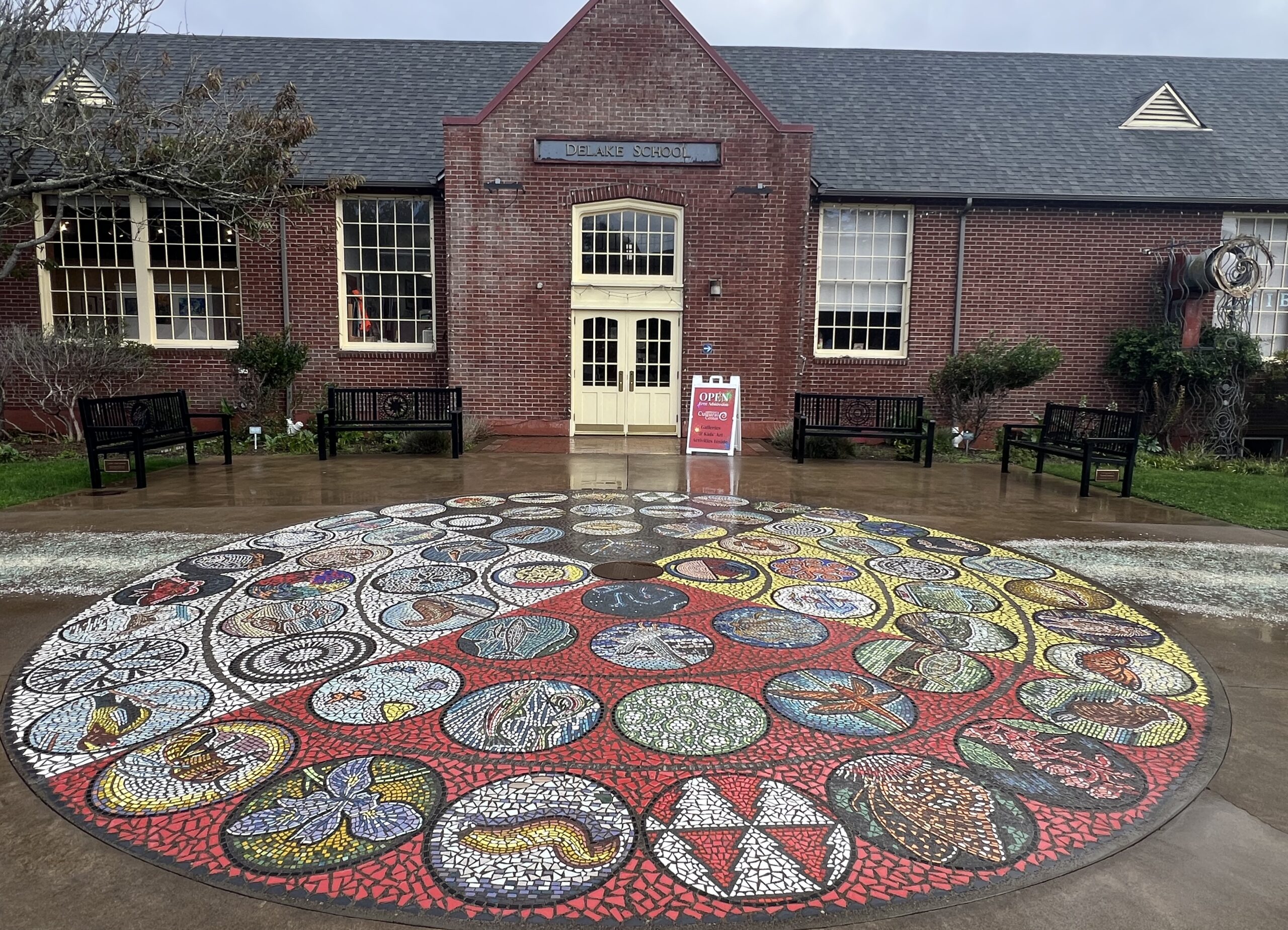
By LORI TOBIAS/Oregon ArtsWatch
LINCOLN CITY — In the seven years since Lincoln City Cultural Center directors embarked on a plaza restoration project, there’s been an ongoing list of new features — a poetry path, interactive art, life-sized musical instruments, among others.
Now, they are about to dedicate the final piece, undeniably the cherry on top. Inspired by the Inuit people, the European Renaissance, and those visionaries who crafted the world maps as round, the Lincoln City Cosmography is as unique as a tidepool.
But more than that, the cosmography is a symbol of community and its connection to the Oregon coast. It’s also a testament to the artist who inspired, conceived, and created it, but who would not see her vision completed.
On Saturday, Nov. 1, the center will dedicate the Lincoln City Cosmography, created by Robin Brailsford with design partner Wick Alexander, and the capstone of its $3.5 million plaza restoration project.
Created using the LithoMosaic art technique patented by Brailsford, the mandala design is 20 feet in diameter with mosaics depicting flora, fauna, and elements of life on the central Oregon coast. The dedication also comes as part of the welcoming ceremony for new executive director Serena Dressel.
The circle contains 64 individual mosaics, each about two feet in diameter.
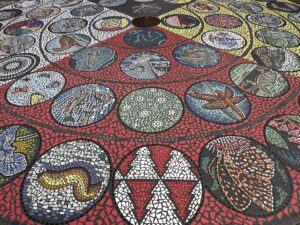
“They consist of ceramic pieces that are unique in that they are colored through,” said Alan Holzapfel, project construction liaison to the center. “If it is turquoise on the surface, it is turquoise all the way through; if it’s brown on top, it’s brown all the way through. LithoMosaics are used in places, like street intersections, where they want color and they want to keep it vibrant. If you paint the design on asphalt it will fade, and you have to repair it. With the LithoMosaic, as they wear down, it still retains the same color and vibrancy.”
The idea for the project came about six years ago as the center’s directors looked for something to fill the empty-ish round space at the west entrance fronting U.S. Highway 101.
“In 2018, we first identified our goal to improve the parking lot,” said Niki Price, the center’s former director who led the plaza project. “We knew that we needed to really start improving the experience of the patron from the outside in, because that was really hampering our ability to move forward as an organization.”
But as important as the art was the idea that it had to last and be able to withstand traffic, because the vendors at the Sunday Market drive over the area.
“Our landscape architect went all over the country trying to find artists who specialized in art that was really, really durable and drivable,” Price said. “They found people who were doing work on transit stations, huge plazas in the Southwest, bus stations, airports, all sorts of huge public spaces that needed to be really, really strong and durable and able to withstand trucks and lots of heavy-duty traffic.”
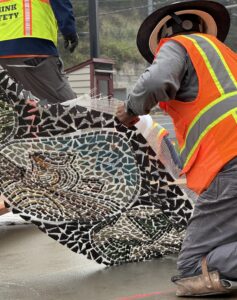
They soon figured out that rather than the traditional mosaic, where the concrete is poured and the design set into it, they needed a “monolithic pour.” That is, Price explained, when “all the concrete comes in at the same time, and all the mosaic is laid in at once. It’s like you’re pouring it together and the bond is really, really tight.”
That’s where Robin Brailsford, and the LithoMosaic process she patented, came in.
Next, they had to decide what this piece of art should depict. To that end, they planned sessions asking for ideas from the public — but then the pandemic struck. So, they did the sessions by Zoom where participants talked about the local culture, why they live here, and what was particularly important to them about the Oregon coast.
“At the end of the day, Robin and Wick came up with a long, long, long list of all the reasons, and they just sort of found it overwhelming,” Price said. “They couldn’t come up with the one unified theme about why everyone loved to live here.”
Except one. The natural world.
“Everyone talked about walking on the beach, enjoying the seasons, loving the rivers and the estuaries, and watching the sky. That just seemed to be the thing that unified us all. That led Robin and Wick to this idea of highlighting all the things that we loved, and then there was an actual location they had to fill, which was a circle. Together, that became a mandala and a cosmography.”
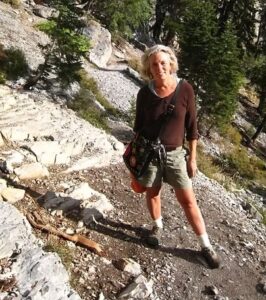
Brailford’s research led her to a cosmography of the heavens made during the Renaissance and another from the Inuit culture that described the seasons through animals. Meanwhile, as Brailsford created the design, Price was busy raising the $200,000 to pay for the piece.
“Finally, in March, I got all the money in place. I call her up to say, ‘Guess what, Robin, I’m sending you the last check,’ and Wick answers and says, ‘I’m sorry. Robin’s in the hospital.’”
Robin Brailsford died March 9 at age 71.
“Because of Covid, because of the workflow, because we had to put it on hold for two years while we raised more money, because of all those reasons, I never got to meet her in person,” Price said. “But I feel like I know her. That’s kind of the power of art.
“When Robin and Wick first showed us the design, they said that they had envisioned it capturing people’s attention, highlighting different species and ideas — that kids would enjoy it like a scavenger hunt. The first time I looked out the window and saw a child jumping from circle to circle … I was just so happy. It was exactly like the artists had imagined, just how they hoped it would be.”
- This story was originally published by our community partner Oregon ArtsWatch. For more arts news coverage go to Oregon ArtsWatch
- Lori Tobias is a longtime Newport-based journalist and author who can be reached at ltwriter0815@gmail.com








